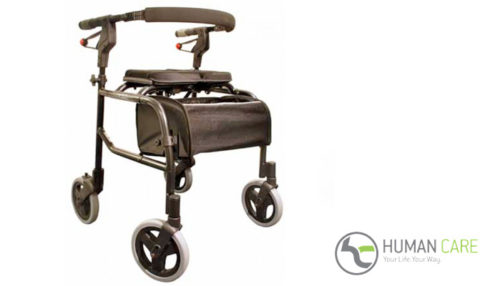A Guide To A Heart Healthy Diet: What To Eat

Heart Healthy Diet: What To Eat
Are you looking to transform your life and be healthier in the New Year? You’re not alone! Every year thousands of people set New Year’s Resolutions for themselves so that they can change an aspect of their lives in the New Year – and the beginning of the New Year is a fresh start and a great way to change your life. This blog will show you what to eat so that you can start 2020 with a heart healthy diet!
Why Choose a Heart Healthy Diet
Heart healthy diets are extremely beneficial and can help lower your risk of heart disease and stroke. This type of diet does this by:
- Improving cholesterol levels
- Reducing blood pressure
- Managing your body weight
- Controlling blood sugar levels
All of these benefits can be achieved with a heart healthy diet!
Foods to Enjoy
There are many foods that are great for your heart and your overall health! Each type of food has a different benefit, but they all work to make your heart healthier.
Fruits and Vegetables
Fruits and vegetables are a great way to help improve your heart health. If you’re looking to reap all the benefits that these tasty foods have, you should fill half of your plate with them! Here is some more information about the benefits you’ll gain from adding fruits and vegetables to your diet.
Heart-Disease Prevention
There are several fruits and vegetables that are rich in Vitamin C and Beta-Carotene (a form of Vitamin A). These healthy additions work as antioxidants which help slow down or prevent atherosclerosis. They do this by reducing the buildup of plaque in the arteries that is caused by cholesterol and other substances. Some of the fruits and vegetables that do this include:
- Broccoli
- Red peppers
- Strawberries
- Oranges
- Kiwi
- Cantaloupe
All fruits and vegetables that have Beta-Carotene are dark-orange, red, or dark-green in colour. These include:
- Carrots
- Tomatoes
- Squash
- Pink grapefruit
- Sweet potatoes
- Swiss chard
All of these fruits and vegetables can help prevent you from having heart-disease!
Fibre
Fruits and vegetables are also a great source of fibre! When you’re preparing these delicious items to eat, try to leave the peels on as you will then intake even more fibre.
Whole Grain Foods
All foods that are prepared using the entire grain are referred to as whole grain products. These products are high in fibre, proteins, and other great nutrients!
Fibre
If you want to keep your heart happy and healthy, you need to make sure that there is plenty of fibre in your diet. Fibre can be found in whole grain foods, fruits and vegetables, as well as in protein based foods. Every healthy adult needs to consume between 25 and 38 grams of fibre a day to keep their hearts happy!
Types of Fibre
There are two kinds of fibre: soluble and insoluble. Here is the difference between these two types of fibre.
Soluble Fibre
Soluble fibre is a soft fibre that helps lower your blood cholesterol and helps control your blood sugar levels. The best sources of soluble fibre include oatmeal, dried beans, peas, apples, strawberries, and more.
Insoluble Fibre
Insoluble fibre, also referred to as roughage, is a bulky type of fibre. This type of fibre can be found in wheat bran, whole-grain foods, and the skins, leaves and seeds of vegetables and fruits. It helps you feel fuller and also promotes bowel regularity.
When eating high-fibre foods, whether they consist of Soluble or Insoluble Fibre, make sure to drink plenty of fluids! This will help your digestive system work better.
How to Boost your Fibre Intake
The best thing about fibre is that it’s not hard to increase your daily consumption. Increasing your fibre intake can be as easy as switching to a different type of bread, rice, or cereal! The healthiest choice when selecting items at the store is products that contain 2 grams of fibre or more.
Proteins
Another great addition to your diet to keep your heart healthy and strong is protein. It is recommended that protein foods should make up a quarter of your plate!
Facts About Protein
It’s common knowledge that protein is a big part of a healthy diet, but understanding what it is, where to get it, and how much we need can be difficult. Protein is a macronutrient that gives us calories and energy. Protein can be found in many things, including:
- Fish
- Poultry
- Tofu
- Low Fat Yogurt
- Meat
- Dairy
- Nuts
- Legumes
- Grains
If you’re looking to improve your heart health, you should be eating proteins like fish, beans, poultry, nuts and low-fat dairy, rather than high-fat meats.
Protein and your Brain
Most of us know that protein is essential for building muscle, but it is also vital to your brain and heart. This macronutrient provides amino acids that help to make up our neurotransmitters. These neurotransmitters carry signals between brain cells which means without protein in your diet, your memory can decrease.
More Water
If you want a healthy heart, it’s time to toss the sugary drinks and pick up a glass of water! There are plenty of benefits that come from increasing the amount of water that you intake on a daily basis. Water is a great way to increase your hydration without adding empty calories. Many people consume calories and sugar that they don’t even realize they are consuming by drinking juice, soda, or other beverages. Once you start drinking more water, you’ll realize that you won’t even miss the sugary drinks!
Eating healthy is a great way to improve your heart health. If you still require any home health care products to improve your daily life, contact the team at ADAPT Home Health Care. Our experts will help you find the perfect product to improve your daily life and your mobility. If you’re looking to learn more about improving your heart health and the foods that you should avoid in order to do that, check out our next blog!
- Adapting the Workplace for People with Disabilities - December 2, 2020
- More About Rollators and The NeXus 3 - March 26, 2020
- Bathroom Safety 101 - March 12, 2020

 905-822-1614
905-822-1614



